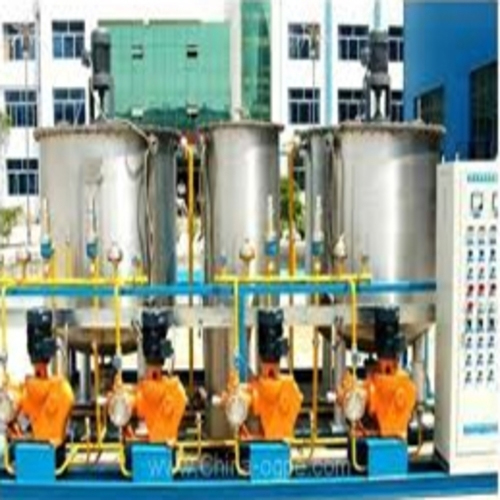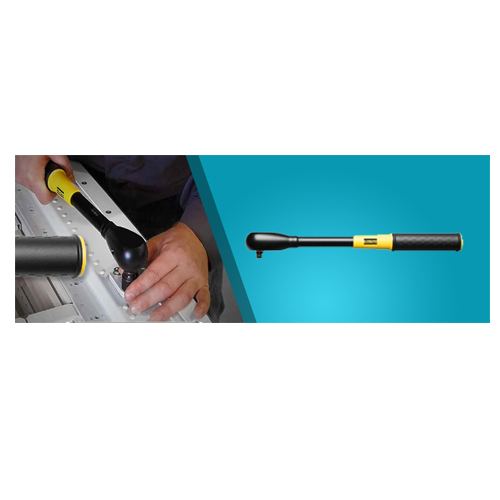Schedule a Call Back
Total Organic Carbon Analysis
 Technical Articles
Technical Articles- Oct 21,10
To design an instrument that can achieve a required level of performance without the inherent problems associated with copying existing systems, companies often are forced to think outside the square. A new approach, often going completely against existing developments, must be explored. Once established, the solution is usually obvious. "One of the amazing realities in TOC analysis is that, until closed-loop technology was introduced, TOC analysers could not directly measure TOC."

Environmental issues are prominent in all countries as regulations continue to become more stringent. Unfortunately, in some instances, instrumentation needed for monitoring the environment does not keep up with the continually developing requirements.
Total Organic Carbon (TOC) analysis is becoming increasingly important as a screening technique for many aspects of environmental monitoring. TOC analysers are typically being used for monitoring river water quality, industrial effluent and water for pharmaceutical applications and drinking water. In order to obtain as much vital information as possible, it is critical that information is collected from as many test points as practicable. As a consequence there is an increasing trend towards the use of unattended TOC analysers located in remote sites.
While conventional TOC analysers are capable of collecting valuable, and almost real-time, data for the quality of the water being tested, generally they are not suited to these applications in remote site.
All TOC analysers oxidise the organic carbon in the sample CO2, which is subsequently measured and reported as a carbon-equivalent value. This is generally where the similarity ends since there are a number of techniques employed for both the oxidation of organic carbon and the measurement of the evolved CO2. While the best methods are invariably being argued, a simple, yet ingenious, variation has been used in a novel TOC analyser to enable it to meet the ever-changing requirements of this flexible method.
The Flow-through Technique...What's Wrong With It?

Most TOC analysers commonly utilise a flow through technique that is very similar in principle to that traditionally used in chromatography systems (figure 1). While this seems like a logical design, in the case of TOC analysers, it presents some very serious problems. In TOC analysers the organic carbon is oxidised using a specific method and a carrier gas is used to transfer the evolved CO2 to the detector for measurement. Typically, a Non-Dispersive InfraRed (NDIR) detector is used for measuring the CO2 that is formed. The use of this detector means the carrier gas must be completely free from water molecules since these molecules will absorb the infrared source causing false high readings for CO2. As with chromatography, the width of the CO2 band passing through the detector affects the overall sensitivity of the instruments. Obviously, the smaller the band the greater the sensitivity. To achieve this, the carrier gas must be maintained at the highest flow-rate possible. This makes the removal of water molecules from the carrier gas quite difficult since the residence time of the carrier gas in the flow-through system reduces as the flow rate increases. The various solutions that have been applied to overcoming this problem include the use of refrigeration systems and water removing filters. Naturally the carrier gas must be as free as possible from CO2 otherwise it will contribute to the detector response and will also cause false high readings. Additional components are required for the flow-through system to dry the carrier gas.Another consideration is that the oxidation of carbon-to-carbon dioxide is not instantaneous, and is affected by both the amount and particular species of carbon in the sample.
Consequently, an oxidation time must be set to allow the complete oxidation of carbon before the carrier gas switched on to sweep the evolved CO2 to the detector. In most cases neither the amount nor the species of carbon in the sample is known making the setting of this oxidation time based purely on a guess.Perhaps the greatest anomaly is that, due to the use of the flow-through system, TOC analysers cannot directly measure TOC.
A New Solution is Needed

The development of a new technique to overcome all or most of the deficiencies presented by the flow-through method while at the same time delivering the very best performance, affordability, simplicity and safety, should be quite complex....but it does not have to be. Figure - 1
Even though the flow-through techniques did not present a viable option, a simple and retrospectively logical solution was applied. Instead of using a flow-through system, a closed loop system was employed.
A commercially available instrument that has been designed with closed-loop technology is the ANATOC Series II TOC Analyser, which is manufactured by SGE International in Australia. This system utilises a closed-loop flow path in conjunction with a unique photocatalytic oxidation process.
In ANATOC Series II the oxidation takes place in a titanium dioxide suspension, which is activated by a 400 nm lamp. The reactor holding the titanium dioxide suspension forms part of the closed loop and the circulating air is bubbled through the liquid in this reactor.
The New Closed-loop Technique

A closed-loop system (figure 2) comprises similar components to that of a flow-through system. The exception is that ambient air is continually circulated through the closed loop and the evolved CO2 is continually swept through the detector, which forms part of the flow path. By using this simple technique many significant benefits can be achieved. The first obvious benefit gained by using a closed-loop system is both the inconvenience and cost of the carrier gas is removed.
A simple diaphragm pump can be used to circulate the ambient air in the loop. The NDIR detector continually measures the concentration of CO2 in the circulating air. After a short period the CO2 reaches equilibrium through the system and a steady baseline CO2 concentration is established. Any changes in the CO2 concentration in the closed-loop are immediately monitored by the detector. A secondary advantage of this technique is the flow rate of the gas can be significantly reduced compared to that used in flow-through system. Also the air is circulated through the drying unit to continually reduce it's condensate level.
Since the drying of the gas becomes a much simpler task, using the closed-loop technique, it requires less expensive and lower maintenance components. When performing a TOC analysis, a critical factor to consider is the overall oxidation reaction rate will vary according to the amount and also the species of carbon present in the sample. For example, the same concentration of humic acid or pesticides will take longer to oxidise than a sugar. Nevertheless, a large concentration of sugar may take the same time as a concentration of pesticide and so on. As each of these two factors vary so does the time required for complete oxidation of the carbon.
In flow-through TOC systems, a flow of carrier gas must be either switched or diverted through the oxidation chamber in order to carry the evolved CO2 through the detector as peak (figure 3a). This is sometimes referred to as a ballistic measurement. The concentration of TOC is calculated from either the peak height or peak area. As a consequence, a predetermined oxidation period must be preset in these systems. It is obvious and logical to assume that neither the concentration nor the species of carbon in the sample are known therefore the presetting of this oxidation time must be purely based on a guess.
In TOC screening, the aim is to get as close to real time analysis as possible. Setting an oxidation time that is too long is not desirable since it will dramatically reduce the sampling rate. Setting an oxidation time that is too short has even greater consequence since the carbon in the sample will not be completely oxidised and an incorrectly low answer will be reported. The main problem, however, is that samples vary so each one could require a different oxidation time.
This presents itself as a major problem, especially in the case of TOC screening since this is usually performed in an isolated, unattended environment so any occurrences of incomplete carbon oxidation may go unnoticed for some time.
By using a closed loop system this guesswork and potential source for incorrect results is removed.
During an analysis the concentration of CO2 in the closed loop increases as a result of the oxidation of any carbon in the sample. This increase is monitored until an equilibrium end point is established. The detector response is based on the difference between the initial and final CO2 concentration in the closed-loop (figure 3b). As with most systems this response value is inserted into a low calibration equation to give a resulting carbon concentration in the sample. The advantage of the closed-loop system is that the oxidation time does not need to be known or entered. In every case the oxidation of the carbon present in the sample will proceed until completion regardless of the amount or species of carbon present. The closed-loop technology offers a simple solution to a very complex problem.
One of the amazing realities in TOC analysis is that, until closed-loop technology was introduced, TOC analysers could not directly measure TOC. Instead, two measurements are made; one for Total Inorganic Carbon (TIC) and the other for Total Carbon (TC = TIC + TOC). The TIC result is subtracted from the TC to indirectly calculate the TOC. The reason this method has been adopted is simple. TIC exists in the sample in the form of carbonates, bicarbonates and carbon dioxide depending on the pH.
At higher pH the equilibrium favours the formation of the carbonates species but at lower pH most of the inorganic carbon exists as carbon dioxide. By taking advantage of this chemistry most TOC systems recommend the removal of TIC by acidification of the sample to around pH3.5 followed by gas striping of the CO2 formed.
This method is very effective for removing the TIC from the sample. Unfortunately it also removes any Purgeable (volatile) Organic Carbon (POC) from the sample. Hence, if this method is used before an analysis is performed, the result can only be expressed in terms of Non-Purgeable Organic Carbon (NPOC) but not as a TOC result. (Figure-4) In order to overcome this problem the two injection method described above is used to indirectly determine TOC.
Once again closed-loop technology can provide a simple, yet ingenious, solution to this seemingly complex difficulty, In the case of the ANATOC Series II, the titanium dioxide suspension is maintained at pH3.0. Since the oxidation of organic carbon requires the activation of the titanium dioxide catalyst by the 400nm light source, the first step is to switch off the lamp. The sample is then injected directly into this TiO2 suspension and, as was described previously, any inorganic carbon present in this acidic media is converted to CO2. The change in CO2 concentration in the closed-loop is monitored until an end point is detected.
When used in the calibration equation this response provides the result for the TIC in the sample. Unlike the example for the flow-through system, where the POC is removed by this technique, in this case both POC and NPOC are trapped in the closed-loop.
In order to commence the oxidation of the TOC the lamp is switched on. On this occasion the change in CO2 concentration represents a direct TOC measurement. One injection is all that is required for the direct measurement of both TIC and TOC (figure 4). Closed-loop technology is the only method that enables direct measurement of TOC. With flow-through systems the user must play a major role in achieving the correct results. Before every analysis the user must answer several questions including the following:
A. Do I have enough external gas? B. Have I set the correct oxidation time? C. Should I remove the TIC from this sample before analysis or will this also remove the POC?
The closed-loop technique has markedly improved the performance capabilities of TOC analysers. It has been able to overcome all the identified major problems that exist with flow-through methods.
As such this development can provide a system that:
- Is able to operate without the need for any external gases. The benefit of this is that the operating costs are significantly reduced while the convenience of use is increased.
- Can operate with simpler gas drying system. This means lower running costs and greater reliability.
- Is able to ensure that oxidation of the carbon goes to completion in the shortest time possible, every time, regardless of the carbon variances between samples.
- Can measure TOC directly.
Closed-loop technology offers an elegant, yet simple solution to a very complex problem.
(SGE Laboratory Accessories Pvt Ltd, Mumbai. Tel: 022-24715896. Telefax: 91-22-24716592. Email: sgeindia@vsnl.com)
Related Products

Ozone System
Omnicorp Environs & Infratech Co offers a wide range of ozone systems.

SWR ’Slipping’ Wrenches
Reliable
Trade Links offers a wide range of SWR ’slipping’ wrenches.

Gripping Systems – Rgg
Schunk Intec India Pvt Ltd offers a wide range of Gripping Systems – RGG - cleaning
device with shank interface.

















